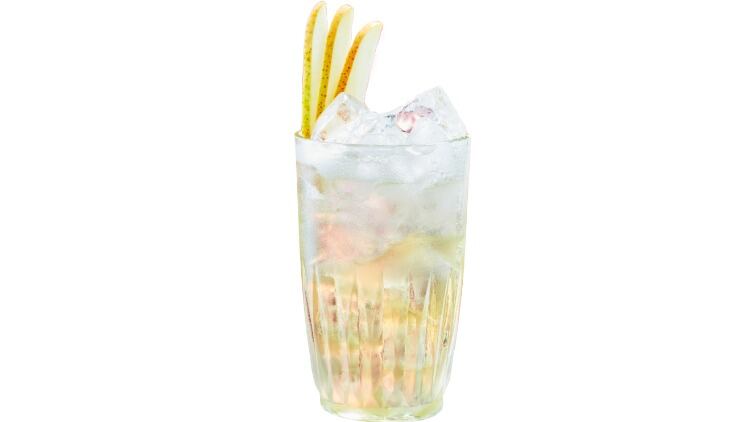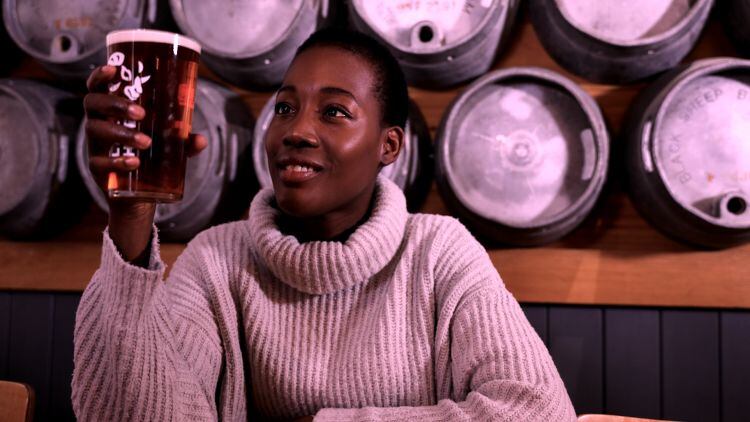Ingredients
- 2 parts Irish whiskey
- Full bottle J2O Spritz Apple & Elderflower
- 1 spoon pear honey
Method
- Build in a highball glass
Garnish
- Best – pear slice
- Better – lemon zest
- Good – lemon wedge
Mixing techniques
There are many techniques to creating that customer cocktail, but the end result should always be the same; a perfectly diluted, chilled & evenly mixed drink.
Did you know there are 11 techniques for mixing? There's a reason it's 'shaken, not stirred'. It produces a different end result and this can completely change the drink from a frothy, flat spirit and mixer to a delicious perfect serve.
1. Measuring
There is a need for accuracy when creating cocktails if you want to achieve balance and consistency but they are not set in stone. If you prefer a sweeter taste, it’s entirely up to you to experiment and alter the quantities.
2. Wet Shaking
Cocktails that include fruit juice, citrus, dairy products, syrups or thicker liqueurs (but never anything carbonated) usually need to be shaken. Pour your ingredients into the small tin, add as much ice as possible to the large tin, pour the ingredients over the ice and combine the tins giving them a gentle knock to secure them.
3. Dry shaking
This method is used when the cocktail contains egg whites. The whites need to be shaken hard without ice for 10 seconds to allow the proteins of the whites to coagulate, aerate and create a foam.
4. Stirring
Cocktails that use spirits only or no citrus should be stirred. It stops the drink getting cloudy or frothy by introducing less air and creates a more viscous texture. Pour your ingredients into your mixing tin, fill two-thirds of the way up with ice cubes, use a bar spoon to stir the ingredients until your perfect temperature and dilution have been achieved.
5. Rolling
This involves chilling a cocktail with a minimum amount of dilution and frothing. Add all your ingredients into the small tin, fill the large tin with ice, pour the ingredients over the ice and combine the tins giving them a gentle knock to secure them. Now gently roll the tins in your hand for 10 seconds.
6. Throwing
Ideal for creating small bubbles in your drink which add a pleasing texture, preferably start with chilled ingredients as the method is ineffective at chilling. Pour your ingredients into the small tin, add two-thirds ice into the large tin and turn your Hawthorne strainer upside down so it fits snugly over the ice. Add your liquid into the large tin and return to the small tin multiple times.
7. Build
Building is the technique of creating your cocktail directly into the final vessel. Perfect for drinks with carbonated ingredients. Pour your non carbonated ingredients into the glass, add ice to the top, top with the carbonated ingredient, stir gently as not to lose much effervescence or bubbles from the drink.
8. Muddling
The idea is to release the flavours from fruit, berries and herbs. Add the fruit or berries to the bottom of the small tin, pour the ingredients over the fruit and lightly crush with a muddler to release the juices/flavours.
9. Strain/fine strain
Essential for creating a deliciously smooth drink. With one hand take your Hawthorne strainer and slot it into the tin (containing the cocktail), with your other grab the fine strainer. Take the index finger from your Hawthorne hand and place it securely across the top of the Hawthorne. Pour your liquid through the Hawthorne and the fine strainer into the vessel.
10. Salt and sugar rims
Cut a lime in half, turn your vessel upside down and gently rub the rim of the glass onto the upright half of lime (ensuring citrus juice does not run down the side of the glass). With your glass still upside down dip it into the required salt or sugar, turning ever so slightly and pull straight up.
11. Layering
When layering begin with the most dense liquid at the bottom of the glass, this is usually the one that contains the most sugar. Then hold a barspoon upside down at a shallow angle over the drink with the edge of the spoon on the inner side of the glass, then slowly pour the second liquid over the back of the spoon and on top of the drink.
To view these tips in full and for more information from Britvic, click here.




